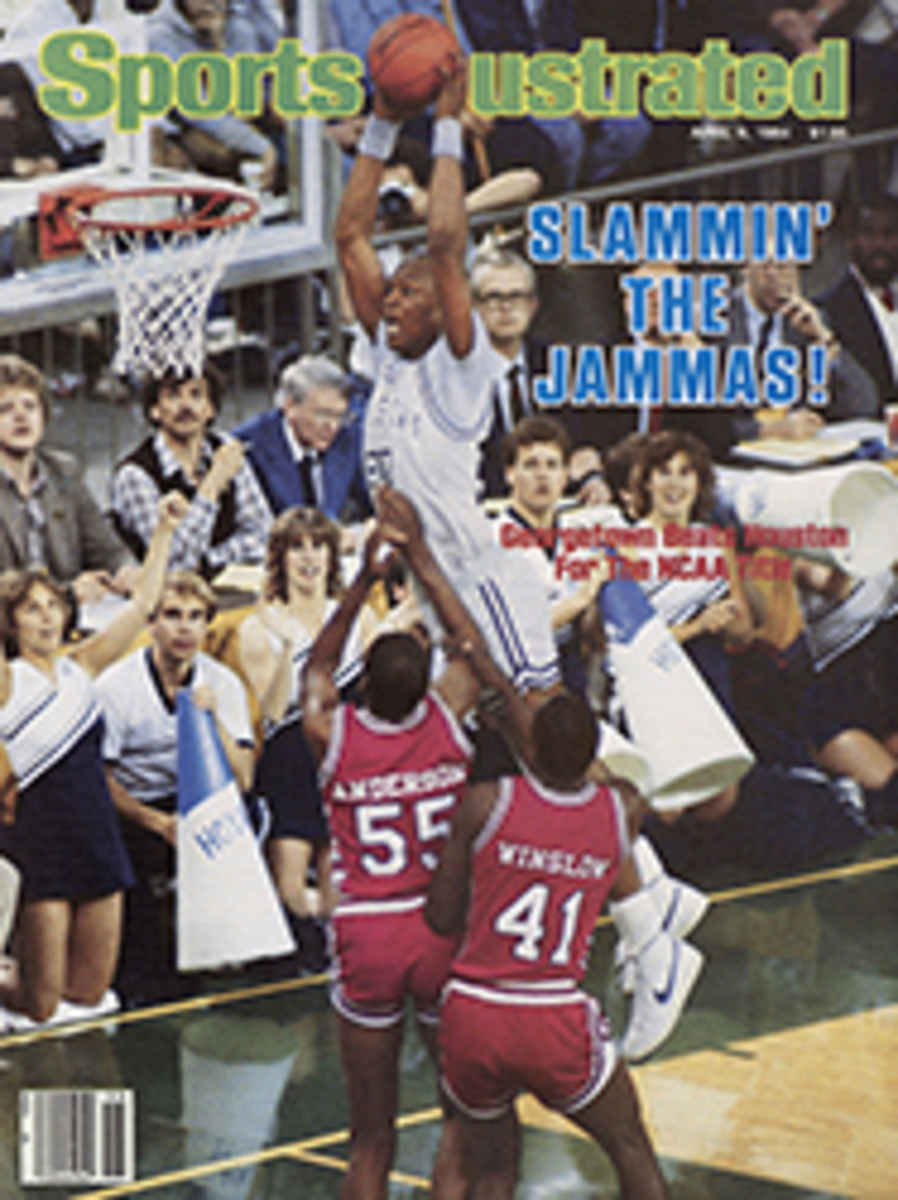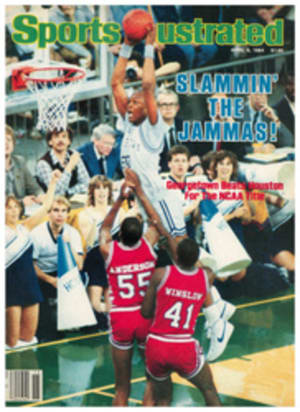
A MARATHON SEARCH FOR THE PERFECT RACE ENDS AMONG ANCIENT REDWOODS
For a long time now—ever since distance running came into high fashion—I've been searching for the perfect run. I've entered events (and have several drawersful of T shirts to prove it) ranging in length from 5 km (too short for a middle-aged man) to 100 miles (too long for this middle-aged man); from New York (too crowded) to Honolulu (too hot), from mountain trails (steep and rough, but otherwise pleasant) to flat pavement (fast but boring); from those with 10 or a dozen entrants (so small that you usually end up running all alone) to those with 10,000 (fine if you need practice at weaving your way through a rush-hour mob to catch a bus or subway train).
I can finally report that the Avenue of the Giants Marathon, organized by the Six Rivers Running Club of Arcata and held for the past 12 years on the first Sunday in May in Northern California's Humboldt County, is as nearly perfect as any one of my tastes is likely to get. The course, following the Eel River and its Bull Creek tributary, runs over gently rolling hills and through groves of coastal redwoods. The cool, damp weather that has sustained the redwoods for millennia is ideal for runners, and because of the limitations of the course and of nearby lodging, the field is limited to 2,000—a size that makes for plenty of company (I like to eavesdrop) but not for crowds.
I had heard of "the Ave," as it's affectionately called by those who know it, from runners at races up and down the West Coast, and last year I decided it was finally time to try it. So, a minute or two before 9 a.m. on May 1, my 20-year-old son, Pete, and I shook hands and wished each other luck, then walked into the mass of nervous, stretching, hopping, shuffling runners massed at the starting line on a paved, two-lane road.
Pete had decided to drive down from Oregon with me only a couple of weeks earlier, when an injured entrant from our area offered him his number. He lined up with the six-minutes-per-mile runners. I had entered in February, but, as usual, my training had been barely adequate, so I joined the seven-minute milers. "Perfect day," a wiry little man beside me said, and then, before I had time to respond, up ahead the gun went off.
My interest in redwood trees was aroused when, as a 12-year-old in Hawaii in 1949, I learned to surf on redwood boards—planks, we called them. Because of my love for those boards I began to read everything I could find about the trees they came from. Now, striding easily through the first mile, other runners padding along, their footfalls strangely silent within the walls and canopy of huge, red-barked, fire-scarred, laceleafed trees, I recalled much of what I had read as a boy.
The first positively identified redwood fossils date back almost 130 million years, so these trees were a living link to a time before the continents were formed, when flying reptiles circled overhead and dinosaurs ruled the land. In that day redwoods grew over much of the earth, but because of altering climatic conditions they have been slowly, inexorably reduced to a 10,000-square-mile strip (much of it protected parkland), the heart of which is in the usually foggy valleys of Northern California. The oldest coastal redwoods are more than 2,000 years old, and one large tree contains enough strong, lightweight, straight-grained, fire-and insect-resistant lumber to build a community of 25 or 30 good-sized houses. Such a tree is as high as a football field is long and nearly 60 feet in circumference—in other words two first downs, or eight Kareem Abdul-Jabbars, or approximately the distance from the pitcher's mound to home. But, as Dr. Paul Zinke of the University of California once remarked in regard to redwoods, "With trees, as with women, too much emphasis can be placed on measurements."
I coasted along, enjoying the dark, cool shade and the massive trunks along both sides of the road. Instead of discussing their pace or the times they were aiming for, which is what you generally hear at the beginning of a race, runners around me were talking about the course.
"No traffic sure makes it nice, doesn't it," said one.
"Great," another answered.
"Look at that one."
"My God, you can't even see the top of the thing."
"You been here before?"
"First time."
"It's like this all the way."
And it was. It's an L-shaped course, a double out-and-back. Starting at the corner of the L, we ran seven miles up the Bull Creek and back, then six up the Eel River and back, to finish where we had started. The best feature of a double out-and-back is that every runner gets to see everyone else in the race twice.
About a mile from the first turnaround, the leader passed me coming the other way. Forty or 50 yards out in front, he appeared to be working too hard so early in the race, while everyone in the pack of 10 or a dozen behind him was running easily. Then came a long line of single runners and pairs, and another group of 10 or so, with Pete among them. He waved and smiled, not even sweating yet.
At the turnaround I felt fine, and, observing the string of runners behind me as I headed back—keeping an eye on those huge trees, too—I was startled when I saw the 10-mile marker just ahead. It didn't seem that I'd run that far. When I heard my split going by, 66 minutes, I knew that my pace was a little too fast—but I felt so good I held it.
Then, not far beyond the 10th mile, I noticed a fallen redwood in a bed of ferns, sorrel and salal, just a few yards off the road between two standing trees. Even a redwood reaches a point when its strength finally gives out, when a blast of wind from a hard storm topples it over. A similar fate awaits the marathoner who runs the first half of a course faster than his training has prepared him for, so I made myself slow down. Passing the fallen tree, I saw that there were sprouts growing from it, near the massive tangle of exposed roots, new trees from the old. I thought of Pete and hoped his run was going well.
The second branch of the L, along the Eel River, isn't quite as hilly as the first stretch, but it's every bit as lovely. Overhead the sun had burned off the layer of morning fog, but it felt as cool as ever beneath the trees—so cool, in fact, that I didn't bother taking either water or ERG at the aid stations, which turned out to be a mistake.
At about 17 miles I saw the runner who had led at the first turnaround. He had dropped out and was walking back toward the start, looking understandably dejected. Soon after that the current leader came by, slim and bearded, tired-looking but determined-looking, too, and running well. (He was 37-year-old Harry Cottrell, who would win in 2:24:34.) Pete had been somewhere near 40th place the first time I saw him, and I counted the runners, curious as to whether he had moved up or dropped back since then. He had jogged through a few marathons as a teenager, but this was his first attempt to run one at anything approaching his potential. I was up to 19 when his blond hair and bright orange singlet appeared up the road in deep shade at the crest of a little hill. When he passed me he smiled and waved again, still looking fresh with four miles to go.
There was a time seven or eight years ago, when our abilities were nearly equal, when Pete and I sometimes found ourselves competing against one another, even on training runs. But Pete began to enjoy running enough to do it all year round, and it soon became obvious that I could never keep up with him again. The process seemed as inevitable and natural as the passage of seasons. So it wasn't exactly pride and certainly not envy when I saw my son near the front of the pack. It was the simple satisfaction in the knowledge we were both where we belonged.
"Who was that?" asked a tall, bearded man running beside me.
"My son."
"He looks damn good. He's up there, too. It must make you feel great."
"You're right. It does."
It wasn't the well-known wall that I hit at 21 miles but, rather, a knee-high fence. Both calves cramped up, first the right one, then, no more than 100 yards farther along, the left, so badly that it was difficult to run at all, even downhill. But now along with the cramps, something strange and pleasant happened: The trees along the road seemed more magnificent than ever. Somehow, because of the pain, I was seeing them, as opposed to merely looking at them. I suppose my struggles to survive the run may have heightened my respect for the redwoods' longevity. I had slowed down drastically—each step I took hurt, and several runners passed me—yet even at that, when I saw the 26-mile marker up the road I was actually sorry the run was ending. Pete, who was standing near the marker, had already changed into a sweatsuit.
"How'd you do?" I asked as I labored past him.
"Two-thirty-four, thirteenth place," he answered, justifiably pleased with his effort. "Kick it in!" he told me.
I laughed at that as I jogged out of the trees and across a bridge over the Eel, but then, out of vanity, I did try to run a little over the last 100 downhill yards to the crowded finish line. My time, I noticed as I passed beneath the digital clock, was 3:02. I grabbed my finisher's T shirt and kept on going through the chute, straight to a nearby truck where young women were handing out free cups of beer.
Like an aging redwood well on the downhill side of maturity, I had weathered another minor storm, and I knew I wasn't quite ready to give out and topple over. My cramps were gone, and I was on my fifth cup of beer and feeling fine when I saw Pete jogging toward me, his legs obviously full of strength and spring. He was still smiling, looking as though he could have run another marathon or two if asked—a young tree growing stronger every day. Beyond Pete, runners streamed across the bridge toward the finish, their outfits in bright contrast to the dark, towering wall of redwood trees behind them.
ILLUSTRATION
MARK FISHER

